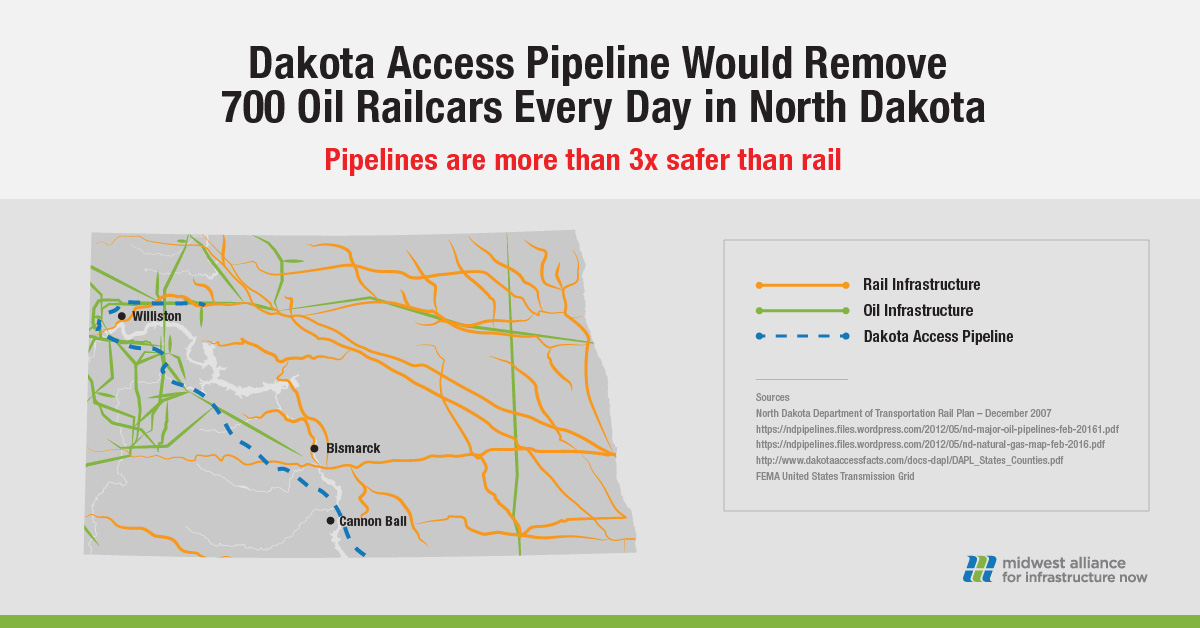Despite the allegations from Standing Rock Sioux Tribe protesters that the Dakota Access Pipeline would pose a threat to their water supply, many forms of energy infrastructure already criss-cross North Dakota today, including multiple crossings of the Missouri River by pipelines and oil-carrying railroads.
Because of the need for pipeline infrastructure, many companies have been forced to make do with railroad shipments of oil as a stop-gap measure until sufficient capacity can be constructed to move Bakken crude out of North Dakota for consumption throughout the United States. This has led to an increased reliance on rail infrastructure, which has a poorer safety record of transportation of crude oil than pipelines, the safest method of transporting crude oil across the country.
Even in North Dakota, there have been significant incidents in Casselton and Heimdal where crude-carrying DOT-111 tank cars exploded following train derailments.
The reality is that without pipelines, railroads would represent the only feasible means of carrying crude significant distances from North Dakota, posing a greater threat to communities within the state and throughout the nation.